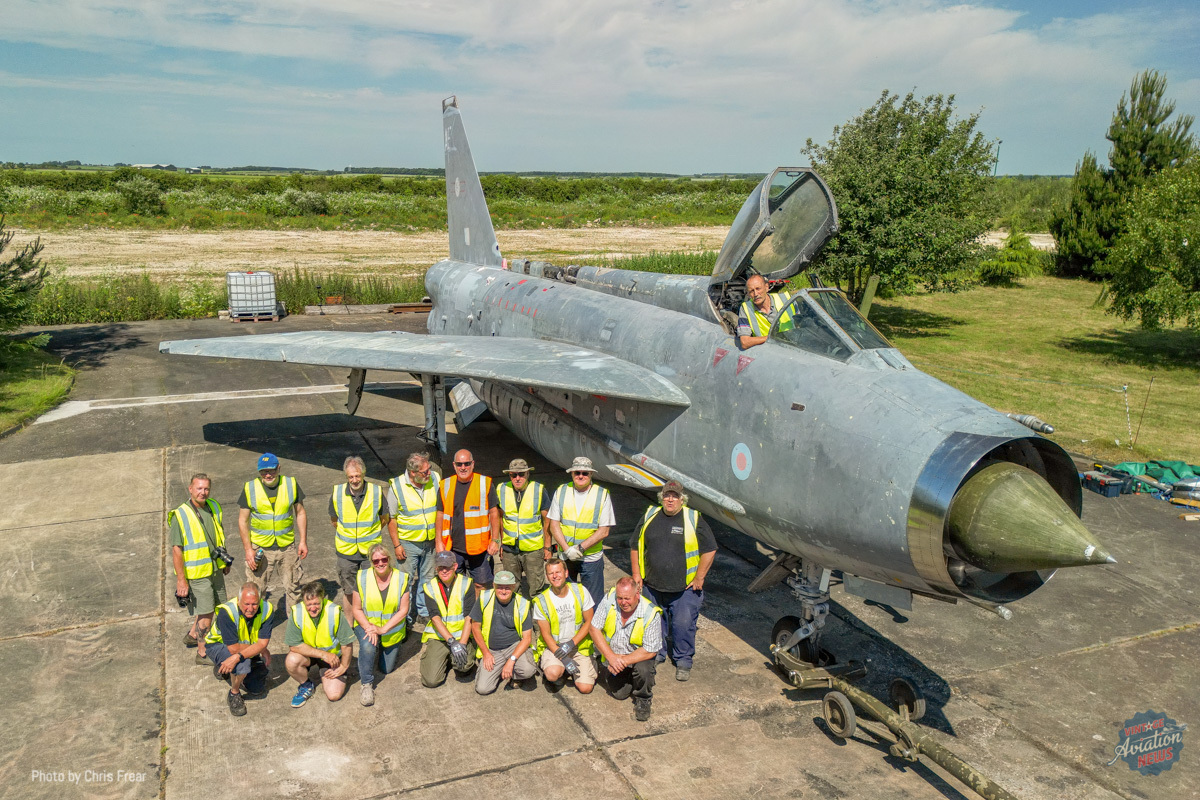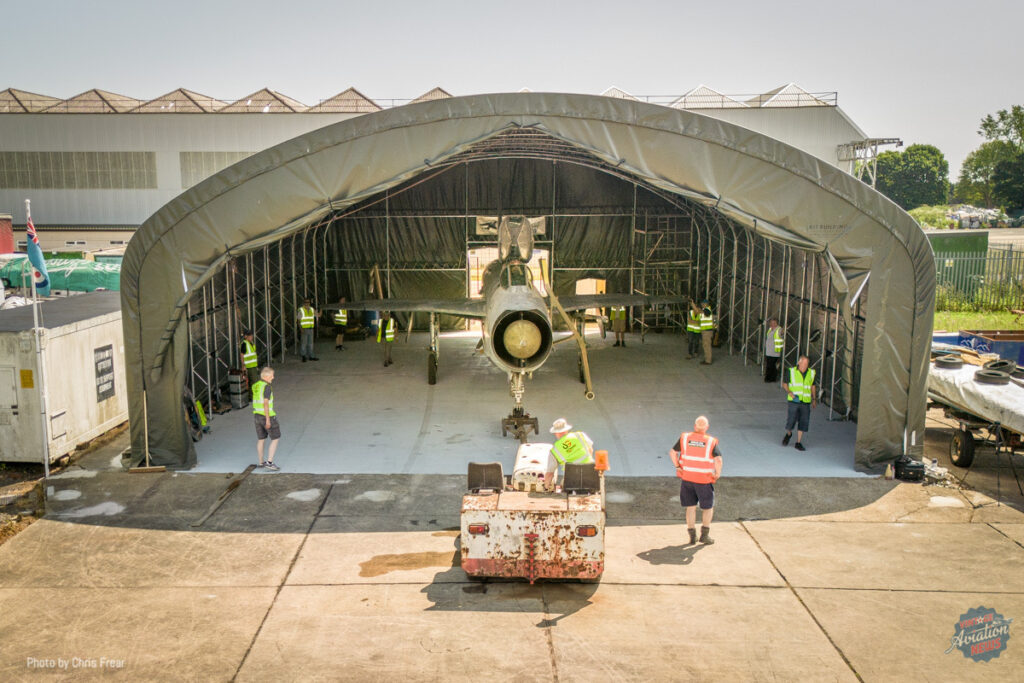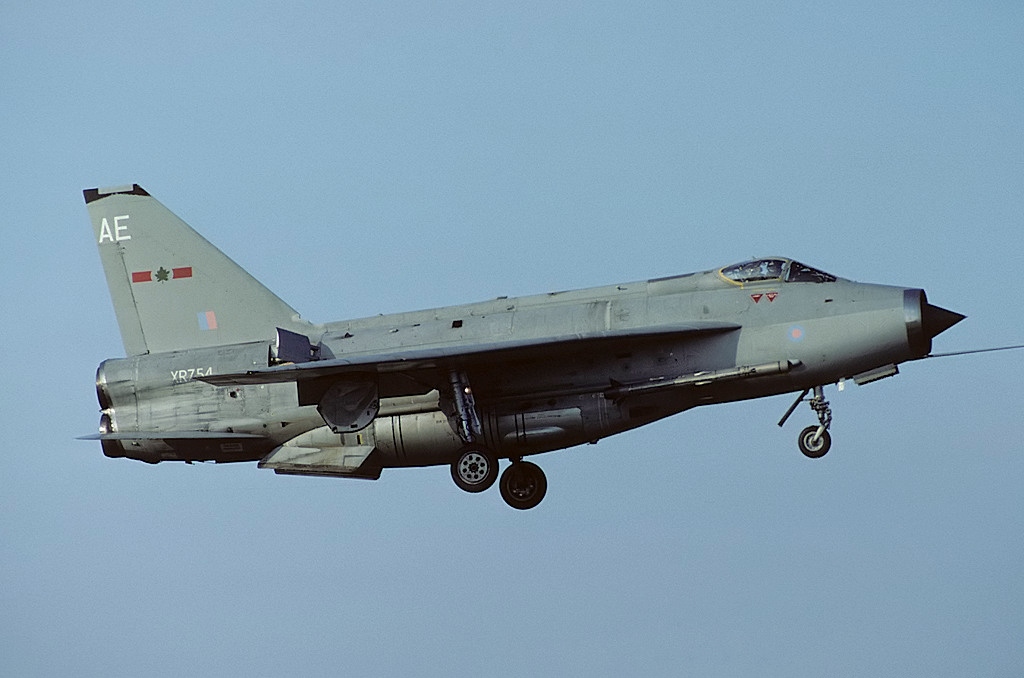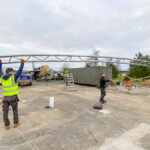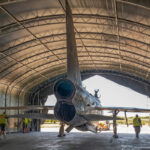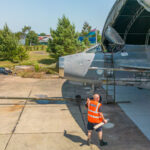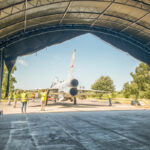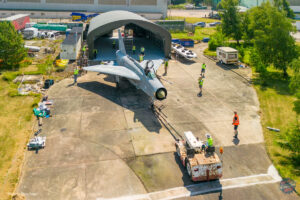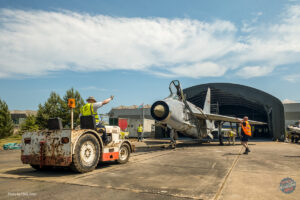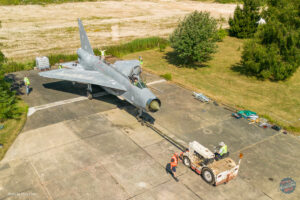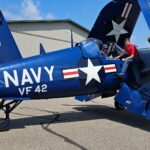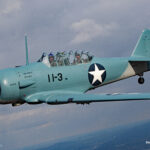By Chris Frear
To the British aviation community, the English Electric Lightning is almost as iconic as the more widely known WWII era Supermarine Spitfire. But by the late 1980s, the Lightning a 50’s era air defense fighter akin to the F-102 and F-106, was technologically obsolete and finally slated for retirement. As a type it served at many RAF bases, but it’s RAF Binbrook in the sleepy rural county of Lincolnshire that is considered the type’s spiritual home, as it was here in 1988 that the type was finally retired.
Although as a design, the Lightning dated back to the mid-1950s. By the time XR724 was built in 1965, English Electric had merged with Hunting Aviation, the Bristol Aeroplane Company, and Vickers-Armstrongs (Aircraft) to form the British Aircraft Corporation. Seventeen years later in 1977, BAC morphed yet again, becoming British Aerospace and so it was to the latter that XR724 was loaned in 1987 escaping the scrapman’s axe, to help with the radar trials for the Tornado which was to due succeed the Lightning as the RAF’s Air Defence Fighter.
Her two Roll’s Royce Avon’s roaring in afterburner, XR724 screamed into the Lincolnshire sky above Binbrook on April the 11th 1987, bound 115 miles North West for Warton, BAe’s airfield in Lancashire, for use as a radar target. After this work was completed in 1990, the RAF was no longer flying Lightnings and no longer needed, XR724 was placed in climate-controlled storage at RAF Shawbury. In 1991 the Lighting Association was able to purchase her and begin making her flight-ready (including having to find two engines and a working ejection seat), as the UK’s Civil Aviation Authority had granted permission for one final flight, home to RAF Binbrook on July 23, 1992.
Fast forward 31 years to this June and after more than three decades mostly outdoors, XR724 the last complete Lightning at RAF Binbrook, finally has a new home. The Lightning Association has built a new aircraft shelter on land at the former airfield. Funding the entire cost of the new shelter themselves and through a GoFundMe page (http://bit.ly/412O2t5).
Members of the Association started to build the new hangar within days of receiving planning permission back in February. Jon Dean, a member of the team described the move as a “massive relief” when after decades outside, covered by tarpaulins and exposed to the elements, XR724 was inched with millimeters to spare into her new home, with brakes applied and wheels chocked.
“We’ve been dreaming of this since I joined the project seven-eight years ago,” said John. The move means the members of the Lightning Association can now actually do year-round restoration work without getting rained on, snow, or windblown. “We’ve had tears today, we’ve had everything, (it’s) fabulous!”
“I probably worked on her back in the day,” said Chris Johnson a former Lightning ground crew and now Association Member, “It’s nice to get it back in a shelter and preserve it for future generations to come and have a look at the aircraft.”
Steve Baker, a spokesman for the Association said “We will be looking at where we can have open days and people can come around and have a good look at the aircraft in a safe environment.”
The Lightning Association was formed in the year following the aircraft’s retirement from RAF service in the spring of 1988, when a ‘Lightning Rally’ for all lightning enthusiasts as well as aircrew and ground crew was organized at the former RAF Binbrook on 2nd July 1989. The event turned out to be such a great success, that out of it the Lightning Association was born. For more information, visit http://www.lightning.org.uk/







